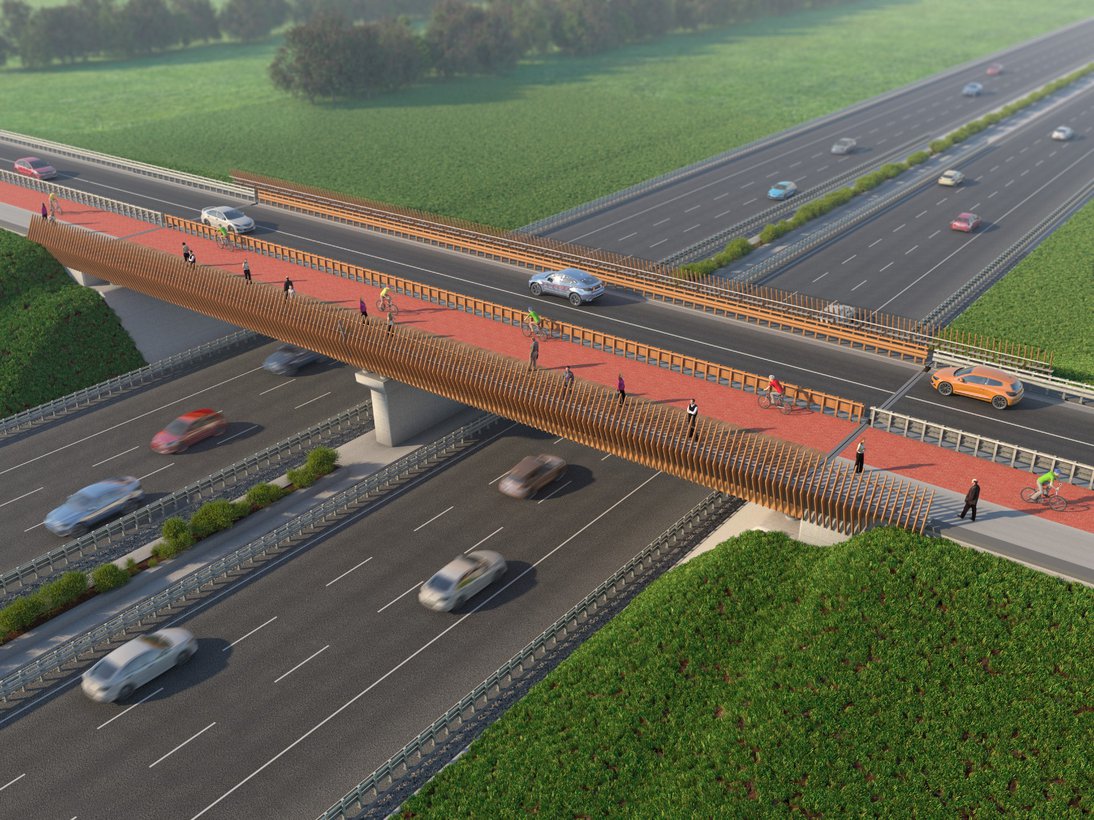Internship Laura Dings
From November 2020 until April 2021, I did an internship at Arup which is an international multidisciplinary engineering firm.
I joined the infrastructure department, where I helped with multiple projects. The main reason I chose Arup is because of their
attitude towards innovative techniques, such as parametric design, which they try to incorporate in as many projects as possible.
The biggest project I worked on was the Circular Viaducts project. The main goal was to prove the feasibility of a viaduct composed solely out of timber elements. This project is part of a challenge by Rijkswaterstaat. For the three winning designs, money will be available for prototype testing. My main contribution to this project consisted out of helping setting up a parametric model for the bridge. This model was used to compare diff erent design options and for optimizing both the dimensions and center-to-center distances of the main girders. All calculations were carried out using Karamba3D, a plugin for Grasshopper. Therefore, all structural data, such as moment lines, stresses, and displacements, could be directly retrieved from Grasshopper. A visualization of the final design is shown in the Figure 1.

Figure 1
Furthermore, I helped on a project called Bridges to Prosperity. This is a charity organization that focusses on building bridges to combat isolation of developing nations. Since construction drawings can be complex to read for the local construction workers, a digital tool is designed that can easily visualize the construction sequence of several bridges. Different required dimensions can be used as an input in this tool. The digital tool is built with Python scripts. However, visualization can be diffi cult in Python, and therefore the model is built in Grasshopper first after which it is transformed into a Python script. Using dictionaries in Python, the elements can have properties connected to them, such as a material type or dimensional information. For this project, I helped making two detail models of the anchorage block in Grasshopper. For one of these details, I also wrote the Python script.
After these two parametric design related projects, I became interested in what other projects Arup did. Therefore, I joined the Van Brienenoordbrug project. This is one of the largest projects within the infrastructure unit. For this project, I did several calculations, such as determining the mass moment of inertia of the bridge around the rotation axis and analyzing diff erent fatigue details. Finally, I analyzed the influence of diff erent support conditions in GSA (see Figure 2). The model will be more accurate when the horizontal support is modeled as a non linear spring that only starts moving when a certain friction threshold is exceeded. However, when a roller will yield similar results, the more simple boundary conditions are preferred.

Figure 2: Top view of the Van Brienenoordbrug in GSA
Due to the COVID measures, the entire internship was online unfortunately. Nevertheless, I really enjoyed my time at Arup. Besides the projects described above, I also joined several general meetings, online coff ee breaks, quizzes, and even an online escape room! This gave me a good impression of the company. I can recommend everyone to do an internship during their studies, since it is an incredible experience where you learn a lot.




